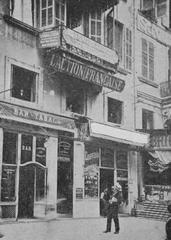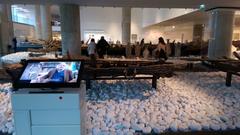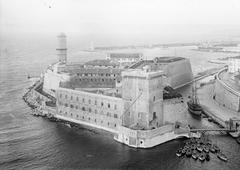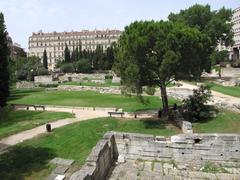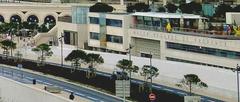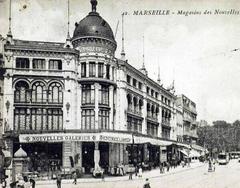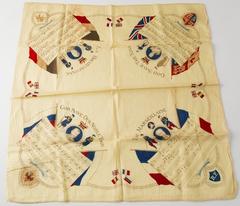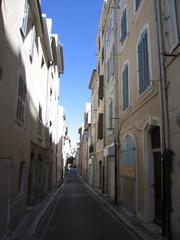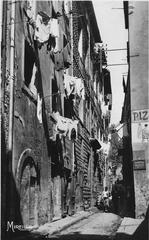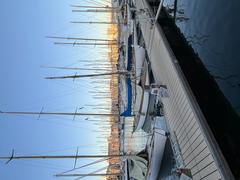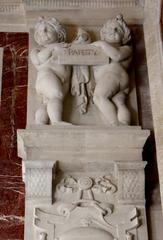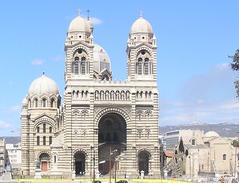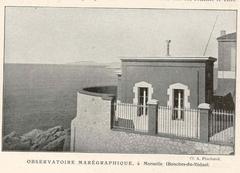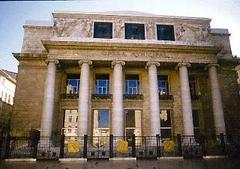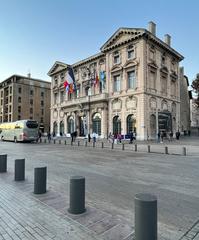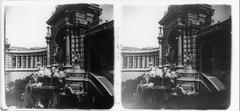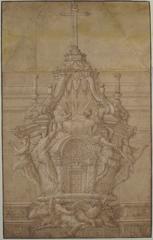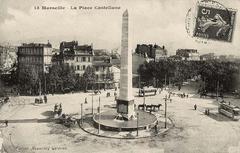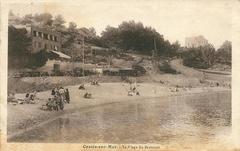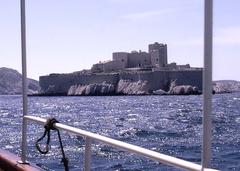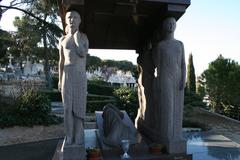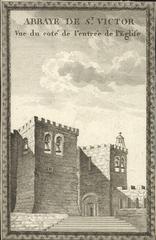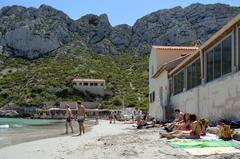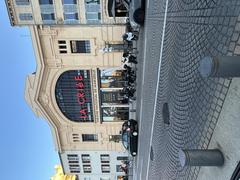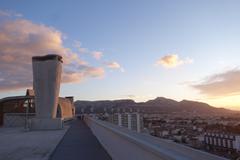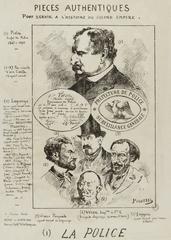मार्सेलिस के सिनेगॉग का व्यापक मार्गदर्शक: मार्सेलिस, फ़्रांस
दिनांक: 07/03/2025
परिचय
मार्सेलिस का सिनेगॉग, जिसे ग्रैंड सिनेगॉग या सिनेगॉग ब्रेटुइल के नाम से भी जाना जाता है, मार्सेलिस की यहूदी विरासत का एक केंद्रीय स्तंभ है और 19वीं सदी की धार्मिक वास्तुकला का एक उल्लेखनीय उदाहरण है। 1864 में स्थापित, यह शहर की बहुसांस्कृतिक विरासत को दर्शाता है, जो एक विशिष्ट रोमानो-बीजान्टिन शैली में पश्चिमी और ओरिएंटल रूपांकनों को मिश्रित करता है। नाथन सैलोमन द्वारा डिज़ाइन किया गया, सिनेगॉग न केवल पूजा स्थल के रूप में कार्य करता है, बल्कि सांस्कृतिक, शैक्षिक और सांप्रदायिक जीवन के एक जीवंत केंद्र के रूप में भी कार्य करता है। इसकी स्थायी उपस्थिति मार्सेलिस के यहूदी समुदाय के एकीकरण, लचीलापन और विविधता का प्रतीक है (स्पॉटिंग हिस्ट्री, वेरोनिका एडवेंचर, फ्रेंचली).
यह मार्गदर्शक सिनेगॉग के इतिहास, स्थापत्य प्रकाश, दर्शन समय, टिकटिंग नीतियों, निर्देशित पर्यटन, शिष्टाचार, पहुंच और आस-पास के आकर्षणों का विस्तृत अवलोकन प्रदान करता है - जो यात्रियों और विरासत के प्रति उत्साही लोगों को सार्थक यात्रा के लिए आवश्यक सब कुछ प्रदान करता है।
ऐतिहासिक पृष्ठभूमि और विकास
उत्पत्ति और प्रारंभिक विकास
मार्सेलिस के यहूदी समुदाय की जड़ें कम से कम पहली शताब्दी सीई तक फैली हुई हैं, जिसमें शहर अक्सर फ्रांस में कहीं और उत्पीड़न के दौरान शरण प्रदान करता था (फ्रेंचली). 19वीं सदी के मध्य तक, रू ग्रां पर मौजूदा सिनेगॉग बढ़ते मंडलियों को समायोजित नहीं कर सकता था। प्रतिक्रिया में, 1855 में एक सफल धन उगाहने वाला अभियान शुरू हुआ, जो वास्तुकार नाथन सैलोमन को कमीशन देने में समाप्त हुआ। नए सिनेगॉग का निर्माण 1860 में शुरू हुआ और 1864 में समाप्त हुआ, जो फ्रांस में यहूदी समुदायों के व्यापक सशक्तिकरण और बढ़ी हुई दृश्यता के साथ हुआ (स्पॉटिंग हिस्ट्री).
स्थापत्य महत्व
सिनेगॉग के लिए सैलोमन का डिजाइन कार्यात्मक और प्रतीकात्मक दोनों है। बेसिलिका लेआउट - सिनेगॉग के लिए दुर्लभ - प्राचीन ग्रीक और रोमन वास्तुकला को दर्शाता है, जो फ्रांसीसी समाज में यहूदी समुदाय के एकीकरण का संकेत देता है (स्पॉटिंग हिस्ट्री). इसके रोमानो-बीजान्टिन बाहरी भाग को गोल मेहराब, अलंकृत पत्थर का काम और एक चमकदार हल्के रंग के मुखौटे से चिह्नित किया गया है। इमारत पश्चिमी और पूर्वी परंपराओं के प्रभावों को सामंजस्यपूर्ण ढंग से मिश्रित करती है, जो मार्सेलिस के यहूदियों की विविध उत्पत्ति को दर्शाती है, जिसमें सेफार्डी, अशकेनाज़ी और प्रोवेन्सल पृष्ठभूमि शामिल हैं।
विशिष्ट विशेषताओं में चौड़े कदम, एक अलंकृत गुलाब खिड़की, और एक講台 और एक अंग जैसी आंतरिक तत्व शामिल हैं - पारंपरिक सिनेगॉग में असामान्य लेकिन क्रॉस-सांस्कृतिक प्रभावों के लिए 19वीं सदी की खुलीता का प्रतीक हैं।
धार्मिक और सांप्रदायिक महत्व
मार्सेलिस का सिनेगॉग शहर का सबसे बड़ा और दक्षिणी फ्रांस का सबसे महत्वपूर्ण है, जो न केवल एक धार्मिक अभयारण्य के रूप में कार्य करता है, बल्कि यहूदी जीवन के एक केंद्रीय केंद्र के रूप में भी कार्य करता है। यह दैनिक, शब्बत और छुट्टियों की सेवाएं आयोजित करता है, साथ ही जीवन-चक्र की घटनाओं, शैक्षिक कार्यक्रमों और सांप्रदायिक सभाओं का भी आयोजन करता है (द स्विश लाइफ). सिनेगॉग की समावेशिता मार्सेलिस की यहूदी आबादी की विकसित, बहुसांस्कृतिक संरचना को दर्शाती है।
यह इमारत महत्वपूर्ण स्मारकों को भी रखती है, जैसे कि प्रलय पीड़ितों को समर्पित वॉल ऑफ नेम्स, और द्वितीय विश्व युद्ध के दौरान निर्वासितों को सम्मानित करने वाली कई पट्टिकाएं (वेरोनिका एडवेंचर). ये तत्व स्मृति और पहचान को संरक्षित करने में सिनेगॉग की भूमिका को सुदृढ़ करते हैं।
उल्लेखनीय ऐतिहासिक घटनाएँ और मील के पत्थर
अपने इतिहास के दौरान, सिनेगॉग ने विजय और दुर्भाग्य दोनों का अनुभव किया है। द्वितीय विश्व युद्ध के दौरान, उत्पीड़न के बीच यह गुप्त पूजा और एकजुटता का स्थल बन गया। युद्ध के बाद के वर्षों में, इसने यहूदी शरणार्थियों का स्वागत करने में महत्वपूर्ण भूमिका निभाई, विशेष रूप से वि-उपनिवेशीकरण के दौरान उत्तरी अफ्रीका से भागने वालों का (द स्विश लाइफ). सिनेगॉग अंतरधार्मिक और नागरिक कार्यक्रमों की मेजबानी करना जारी रखता है, जो मार्सेलिस के बहुसांस्कृतिक परिदृश्य के भीतर इसके महत्व को रेखांकित करता है।
हाल के दशकों में, बढ़ती यहूदी-विरोधी भावना के जवाब में सुरक्षा उपायों को बढ़ाया गया है, जिससे उपासकों और आगंतुकों की सुरक्षा सुनिश्चित हो रही है (पॉल मरीना: सिनेगॉग शिष्टाचार).
आगंतुक सूचना: घंटे, टिकट और पहुंच
मार्सेलिस सिनेगॉग दर्शन घंटे
-
ग्रैंड सिनेगॉग (117 रू ब्रेटुइल):
- मंगलवार से शनिवार: सुबह 10:00 बजे - शाम 6:00 बजे
- रविवार और सोमवार: बंद
- शब्बत और यहूदी छुट्टियाँ: पर्यटकों के लिए बंद
- नोट: धार्मिक त्योहारों के दौरान घंटे बदल सकते हैं। पहले से पुष्टि करें।
-
ULIF मार्सेलिस सिनेगॉग (21 रू मार्टिनी):
- मुख्य रूप से शब्बत (शुक्रवार शाम और शनिवार सुबह) और यहूदी छुट्टियों के दौरान खुला रहता है; अन्य दर्शन पूर्व-व्यवस्था द्वारा (जेगाइड यूरोप).
टिकट और निर्देशित पर्यटन
- प्रवेश: व्यक्तिगत आगंतुकों के लिए नि: शुल्क; दान की सराहना की जाती है।
- निर्देशित पर्यटन: शुल्क आमतौर पर €5–€20 प्रति व्यक्ति होता है। अग्रिम बुकिंग की सिफारिश की जाती है, विशेष रूप से समूहों या व्यस्त मौसमों के दौरान (वेरोनिका एडवेंचर).
- समूह दर्शन और विशेष कार्यक्रम: अग्रिम पंजीकरण या टिकट खरीद की आवश्यकता हो सकती है। विवरण की पुष्टि के लिए सिनेगॉग से सीधे संपर्क करें।
पहुंच
- व्हीलचेयर पहुंच: दोनों सिनेगॉग व्हीलचेयर के अनुकूल हैं, जिनमें रैंप और सुलभ शौचालय उपलब्ध हैं।
- विशेष सहायता: यदि आपको अतिरिक्त सहायता की आवश्यकता है तो कर्मचारियों को पहले से सूचित करें।
सुरक्षा और आगंतुक प्रोटोकॉल
- सुरक्षा: प्रवेश पर आईडी जांच और बैग निरीक्षण की उम्मीद करें। वैध फोटो पहचान के साथ पहुंचें और सभी सुरक्षा निर्देशों का पालन करें।
- ड्रेस कोड: मामूली पोशाक आवश्यक है। पुरुषों को किप्पा (सिर पर पहनने वाली टोपी) पहनना चाहिए; महिलाओं को कंधों और घुटनों को ढकने के लिए कहा जाता है।
- फोटोग्राफी: सेवाओं के दौरान या अभयारण्य के अंदर आम तौर पर निषिद्ध है; अन्यत्र अनुमति आवश्यक है।
शिष्टाचार
- व्यवहार: सेवाओं के दौरान चुप्पी या संयमित बातचीत की उम्मीद है। मोबाइल फोन को साइलेंट कर देना चाहिए।
- बैठने की व्यवस्था: ग्रैंड सिनेगॉग पारंपरिक बैठने की व्यवस्था का पालन करता है; ULIF सिनेगॉग (मासोर्टी/रूढ़िवादी) मिश्रित बैठने की अनुमति देता है (जूडाईका मासोर्टी मार्सेलिस).
- भाषाएँ: सेवाएं हिब्रू में होती हैं, प्रार्थना पुस्तकों में फ्रांसीसी अनुवाद और ध्वन्यात्मक गाइड होते हैं। अक्सर अंग्रेजी सहायता उपलब्ध होती है।
सांप्रदायिक जीवन और सांस्कृतिक गतिविधियाँ
पूजा से परे, सिनेगॉग शिक्षा, उत्सव और अंतरधार्मिक संवाद के लिए गतिशील केंद्रों के रूप में काम करते हैं। नियमित कार्यक्रमों में व्याख्यान, अध्ययन समूह और सांस्कृतिक कार्यक्रम शामिल हैं जो स्थानीय लोगों और आगंतुकों दोनों का स्वागत करते हैं (जूडाईका मासोर्टी मार्सेलिस). प्रमुख यहूदी त्यौहार - जैसे फसह, रोश हशनाह, योम किप्पुर और हनुक्का - सांप्रदायिक प्रार्थनाओं, उत्सव भोजन और शैक्षिक गतिविधियों के साथ चिह्नित किए जाते हैं। अंतरधार्मिक सभाएं और स्थानीय संगठनों के साथ साझेदारी आपसी समझ को बढ़ावा देती है और पूर्वाग्रह का मुकाबला करती है (रोड्स एंड किंगडम्स).
स्थापत्य और कलात्मक प्रकाश
- बाहरी: ग्रैंड सिनेगॉग के मुखौटे में रोमनस्क्यू मेहराब, एक बड़ी गुलाब खिड़की और जटिल पत्थर का काम है।
- आंतरिक: अभयारण्य में जीवंत रंगीन कांच की खिड़कियां, संगमरमर के फर्श, एक講台, अंग, और अलंकृत नक्काशीदार ark है।
- स्मारक: वॉल ऑफ नेम्स और द्वितीय विश्व युद्ध के स्मारक पट्टिकाएं समुदाय के इतिहास की गंभीर याद दिलाती हैं।
भवन की ध्वनिकी संगीत कार्यक्रमों, जिसमें अंग प्रदर्शन शामिल हैं, के लिए अच्छी तरह से अनुकूल है। संरक्षण के प्रयासों ने इन विशेषताओं की अखंडता को बनाए रखा है, और सिनेगॉग 2007 से एक ऐतिहासिक स्मारक के रूप में नामित है।
स्थान और आस-पास के आकर्षण
- ग्रैंड सिनेगॉग: 117 रू ब्रेटुइल, 13006 मार्सेलिस
- ULIF सिनेगॉग: 21 रू मार्टिनी, 13008 मार्सेलिस
दोनों स्थान सार्वजनिक परिवहन द्वारा आसानी से सुलभ हैं और मार्सेलिस के अन्य प्रमुख ऐतिहासिक स्थलों जैसे कि ओल्ड पोर्ट (वियक्स-पोर्ट), बेसिलिका नोट्रे-डेम डे ला गार्डे, पैलेस लोंगचैम्प, और जीवंत यहूदी जिले के पास स्थित हैं, जहां कोशर रेस्तरां और सांस्कृतिक दुकानें हैं (वेरोनिका एडवेंचर).
अक्सर पूछे जाने वाले प्रश्न (FAQ)
प्र: मार्सेलिस सिनेगॉग के मुख्य दर्शन घंटे क्या हैं? उ: ग्रैंड सिनेगॉग मंगलवार से शनिवार, सुबह 10:00 बजे से शाम 6:00 बजे तक खुला रहता है, रविवार, सोमवार और यहूदी छुट्टियों पर बंद रहता है। ULIF सिनेगॉग शब्बत और छुट्टियों के दौरान खुला रहता है, जबकि अन्य दर्शन पूर्व-व्यवस्था द्वारा होते हैं।
प्र: क्या कोई प्रवेश शुल्क है? उ: व्यक्तिगत आगंतुकों के लिए प्रवेश आम तौर पर नि: शुल्क है; दान का स्वागत है। निर्देशित पर्यटन और समूह दर्शन के लिए शुल्क लिया जा सकता है।
प्र: क्या निर्देशित पर्यटन उपलब्ध हैं? उ: हाँ। कई भाषाओं में निर्देशित पर्यटन उपलब्ध हैं और गहरे अनुभव के लिए अनुशंसित हैं।
प्र: क्या सिनेगॉग विकलांग लोगों के लिए सुलभ है? उ: हाँ। दोनों सिनेगॉग व्हीलचेयर के अनुकूल हैं। विशेष सहायता के लिए कर्मचारियों को पहले से सूचित करें।
प्र: क्या मैं अंदर तस्वीरें ले सकता हूँ? उ: फोटोग्राफी आम तौर पर सेवाओं के दौरान या अभयारण्य के अंदर की अनुमति नहीं है। हमेशा अन्यत्र अनुमति लें।
प्र: क्या अग्रिम पंजीकरण आवश्यक है? उ: समूह दर्शन, शैक्षिक पर्यटन और नियमित सेवा घंटों के बाहर के लिए अग्रिम संपर्क आवश्यक है।
यात्रा युक्तियाँ
- सुविधाजनक पहुंच के लिए सार्वजनिक परिवहन का उपयोग करें।
- शालीनता से कपड़े पहनें और आगंतुक शिष्टाचार का पालन करें।
- विशेष रूप से यहूदी छुट्टियों के आसपास, घंटों की पुष्टि करें।
- व्यापक सांस्कृतिक अनुभव के लिए मार्सेलिस के अन्य ऐतिहासिक स्थलों के साथ अपनी यात्रा को संयोजित करें।
निष्कर्ष
मार्सेलिस का सिनेगॉग एक स्थापत्य चमत्कार से कहीं अधिक है - यह यहूदी परंपरा, ज्ञान और लचीलेपन का एक जीवंत केंद्र है। चाहे आप इसके इतिहास, कलात्मक भव्यता, या जीवंत सांप्रदायिक जीवन से आकर्षित हों, एक यात्रा मार्सेलिस के बहुसांस्कृतिक ताने-बाने में गहरी अंतर्दृष्टि प्रदान करती है। आगंतुक दिशानिर्देशों का सम्मान करके और स्थानीय समुदाय के साथ जुड़कर, यात्री मार्सेलिस में यहूदी जीवन की स्थायी विरासत और समकालीन जीवन शक्ति का अनुभव कर सकते हैं।
आगंतुक सूचना, विशेष कार्यक्रमों और निर्देशित पर्यटन की उपलब्धता के बारे में नवीनतम जानकारी के लिए, आधिकारिक सिनेगॉग संसाधनों से परामर्श करने या व्यक्तिगत सांस्कृतिक यात्रा कार्यक्रमों के लिए ऑडिएला ऐप डाउनलोड करने के लिए प्रोत्साहित किया जाता है। नवीनतम जानकारी और विशेष यात्रा अंतर्दृष्टि के लिए सोशल मीडिया के माध्यम से जुड़े रहें।
संदर्भ और अतिरिक्त जानकारी
- मार्सेलिस का ग्रैंड सिनेगॉग, स्पॉटिंग हिस्ट्री
- मार्सेलिस यहूदी विरासत टूर, वेरोनिका एडवेंचर
- यहूदी प्रोवेंस, फ्रेंचली
- मार्सेलिस यहूदी विरासत टूर, द स्विश लाइफ
- सिनेगॉग शिष्टाचार, पॉल मरीना
- ULIF मार्सेलिस सिनेगॉग, जेगाइड यूरोप
- जूडाईका मासोर्टी मार्सेलिस
- मार्सेलिस के लिए जानने से पहले, रोड्स एंड किंगडम्स
ऑडिएला2024{‘date’: ‘03/07/2025’, ‘task’: {‘model’: ‘gpt-4.1-mini’, ‘query’: ‘Comprehensive guide to visiting Synagogue Of Marseille, Marseille, France: history, significance, visitor tips, and everything tourists need to know for a memorable experience.’, ‘verbose’: False, ‘guidelines’: [“Keyword Research: Identify relevant keywords that potential visitors are likely to search for, such as ‘[Monument Name] visiting hours,’ ‘[Monument Name] tickets,’ and ‘[City] historical sites.’ Use these keywords strategically throughout the article, including in the title, headers, and body text, but avoid keyword stuffing.”, ‘Engaging and Informative Title: Craft a title that is both SEO-friendly and compelling to encourage clicks. Include the main keyword and make it clear what the article will cover.’, ‘Structured Content: Use headings (H1, H2, H3) to organize the content effectively. This helps with SEO and makes the article easier for readers to navigate. Include an introduction that hooks the reader, a detailed body that covers all relevant aspects, and a conclusion that summarizes the key points.’, ‘Comprehensive Coverage: Address common questions and topics of interest such as the history of the monument, its cultural significance, visitor information (e.g., ticket prices, opening hours), travel tips, nearby attractions, and accessibility. Include sections that might be unique to the monument, like special events, guided tours, and photographic spots.’, ‘Quality Content: Ensure the content is well-researched, accurate, and provides real value to readers. Use reliable sources and provide factual information. Write in a clear, engaging, and accessible style. Consider your audience and use language that is appropriate for those likely to visit the monument.’, ‘Visuals and Media: Incorporate high-quality images or videos of the monument. These should be optimized for the web (correct sizing, alt tags with keywords). Consider interactive elements like virtual tours or maps.’, ‘Internal and External Links: Include links to other related articles on your site to encourage deeper engagement (internal links). Link to official websites for the monument or credible sources for further reading (external links).’, ‘FAQ: Incorporate FAQ sections to target voice search queries and featured snippets’, ‘Visit and Stay Up to Date: End the article with a call to action, such as encouraging readers to download our mobile app Audiala, check out other related posts, or follow on social media for more updates.’], ‘max_sections’: 4, ‘publish_formats’: {‘pdf’: False, ‘docx’: False, ‘markdown’: True}, ‘follow_guidelines’: True}, ‘title’: ‘Comprehensive Guide to Visiting the Synagogue of Marseille, Marseille, France’, ‘report’: ”# Synagogue of Marseille: Visiting Hours, Tickets, and Historical Significance\n#### Date: 03/07/2025\n\n## Introduction\n\nThe Synagogue of Marseille, also known as the Grand Synagogue or Synagogue Breteuil, stands as a central pillar of Marseille’s Jewish heritage and a remarkable example of 19th-century religious architecture. Established in 1864, it reflects the city’s multicultural legacy, blending Western and Oriental motifs in a distinctive Romano-Byzantine style. Designed by Nathan Salomon, the synagogue not only serves as a place of worship but also as a vibrant hub for cultural, educational, and communal life. Its enduring presence symbolizes the integration, resilience, and diversity of Marseille’s Jewish community (Spotting History, Veronika’s Adventure, Frenchly).\n\nThis guide provides a detailed overview of the synagogue’s history, architectural highlights, visiting hours, ticketing policies, guided tours, etiquette, accessibility, and nearby attractions—equipping travelers and heritage enthusiasts with everything needed for a meaningful visit.\n\n---\n\n## Historical Background and Development\n\n### Origins and Early Development\n\nThe roots of Marseille’s Jewish community extend back to at least the first century CE, with the city often providing refuge during times of persecution elsewhere in France (Frenchly). By the mid-19th century, the existing synagogue on Rue Grignan could no longer accommodate the growing congregation. In response, a successful fundraising campaign began in 1855, culminating in the commissioning of architect Nathan Salomon. Construction of the new synagogue commenced in 1860 and concluded in 1864, coinciding with the broader emancipation and increased visibility of Jewish communities in France (Spotting History).\n\n### Architectural Significance\n\nSalomon’s design for the synagogue is both functional and symbolic. The basilica layout—rare for synagogues—echoes ancient Greek and Roman architecture, signaling the Jewish community’s integration into French society (Spotting History). Its Romano-Byzantine exterior is marked by rounded arches, ornate stonework, and a luminous light-colored façade. The building harmoniously blends influences from Western and Oriental traditions, reflecting the diverse origins of Marseille’s Jews, including Sephardic, Ashkenazi, and Provençal backgrounds.\n\nDistinctive features include a grand entrance with broad steps, an elaborate rose window, and interior elements such as a pulpit and an organ—uncommon in traditional synagogues but emblematic of 19th-century openness to cross-cultural influences.\n\n---\n\n## Religious and Community Significance\n\nThe Synagogue of Marseille is the largest in the city and one of the most significant in southern France, serving not just as a religious sanctuary but as a central hub for Jewish life. It hosts daily, Shabbat, and holiday services, as well as life-cycle events, educational programs, and community gatherings (The Swish Life). The synagogue’s inclusiveness reflects the evolving, multicultural makeup of Marseille’s Jewish population.\n\nThe building also houses important memorials, such as the Wall of Names, commemorating victims of the Holocaust, and multiple plaques honoring those who suffered deportation during World War II (Veronika’s Adventure). These elements reinforce the synagogue’s role in preserving both memory and identity.\n\n---\n\n## Notable Historical Events and Milestones\n\nThroughout its history, the synagogue has witnessed both triumph and adversity. During World War II, it became a site of clandestine worship and solidarity amid persecution. In the postwar years, it played a pivotal role in welcoming Jewish refugees, especially those fleeing North Africa during decolonization (The Swish Life). The synagogue continues to host interfaith and civic events, underscoring its significance within Marseille’s multicultural landscape.\n\nIn recent decades, heightened security measures have been implemented in response to rising anti-Semitism, ensuring the safety of worshippers and visitors (PaulMarina: Synagogue Etiquette).\n\n---\n\n## Visiting Information: Hours, Tickets, and Accessibility\n\n### Synagogue of Marseille Visiting Hours\n\n- Grand Synagogue (117 Rue Breteuil):\n - Tuesday to Saturday: 10:00 AM – 6:00 PM\n - Sunday & Monday: Closed\n - Shabbat and Jewish Holidays: Closed to tourists\n - Note: Hours may vary during religious festivals. Confirm in advance.\n\n- ULIF Synagogue of Marseille (21 rue Martiny):\n - Primarily open during Shabbat (Friday evening and Saturday morning) and Jewish holidays; other visits by appointment (JGuide Europe).\n\n### Tickets and Guided Tours\n\n- Admission: Free for individual visitors; donations are appreciated.\n- Guided Tours: Fees generally range from €5–€20 per person. Advance booking is recommended, especially for groups or during peak seasons (Veronika’s Adventure).\n- Group Visits & Special Events: May require prior registration or ticket purchase. Contact the synagogue directly to confirm details.\n\n### Accessibility\n\n- Wheelchair Access: Both synagogues are wheelchair accessible, with ramps and accessible restrooms available.\n- Special Assistance: Notify staff in advance if you require additional support.\n\n### Security and Visitor Protocols\n\n- Security: Expect ID checks and bag inspections at entry. Arrive with valid photo identification and adhere to all security instructions.\n- Dress Code: Modest attire is required. Men should wear a kippah (provided onsite); women are asked to cover shoulders and knees.\n- Photography: Generally prohibited during services and inside the sanctuary; permission is required elsewhere.\n\n### Etiquette\n\n- Behavior: Silence or subdued conversation is expected during services. Mobile phones should be silenced.\n- Seating: The Grand Synagogue follows traditional seating; the ULIF Synagogue (Massorti/Conservative) allows mixed seating (Judaïca Massorti Marseille).\n- Languages: Services are in Hebrew, with prayer books featuring French translations and phonetic guides. English assistance is often available.\n\n---\n\n## Community Life and Cultural Activities\n\nBeyond worship, the synagogues serve as dynamic centers for education, celebration, and interfaith dialogue. Regular programs include lectures, study groups, and cultural events that welcome both locals and visitors (Judaïca Massorti Marseille). Major Jewish festivals—such as Passover, Rosh Hashanah, Yom Kippur, and Hanukkah—are marked with communal prayers, festive meals, and educational activities. Interfaith gatherings and partnerships with local organizations foster mutual understanding and combat prejudice (Roads & Kingdoms).\n\n---\n\n## Architectural and Artistic Highlights\n\n- Exterior: The Grand Synagogue’s façade features Romanesque arches, a large rose window, and intricate stonework.\n- Interior: The sanctuary boasts vibrant stained-glass windows, marble floors, a pulpit, organ, and elaborately carved ark.\n- Memorials: The Wall of Names and WWII commemorative plaques serve as solemn reminders of the community’s history.\n\nThe building’s acoustics are well-suited for musical events, including organ performances. Preservation efforts have maintained the integrity of these features, and the synagogue has been designated a Monument Historique since 2007.\n\n---\n\n## Location and Nearby Attractions\n\n- Grand Synagogue: 117 Rue Breteuil, 13006 Marseille\n- ULIF Synagogue: 21 rue Martiny, 13008 Marseille\n\nBoth locations are easily accessible by public transport and situated near other key Marseille historical sites, such as the Old Port (Vieux-Port), Basilique Notre-Dame de la Garde, Palais Longchamp, and the vibrant Jewish district with kosher restaurants and cultural shops (Veronika’s Adventure).\n\n---\n\n## Frequently Asked Questions (FAQ)\n\nQ: What are the main visiting hours for the Synagogue of Marseille? \nA: The Grand Synagogue is open Tuesday to Saturday, 10:00 AM–6:00 PM, closed on Sundays, Mondays, and Jewish holidays. The ULIF Synagogue is open during Shabbat and holidays, with other visits by appointment.\n\nQ: Is there an entrance fee? \nA: Entry is generally free; donations are welcome. Guided tours and group visits may require a fee.\n\nQ: Are guided tours available? \nA: Yes. Guided tours in multiple languages are available and recommended for a deeper experience.\n\nQ: Is the synagogue accessible for people with disabilities? \nA: Yes. Both synagogues are wheelchair accessible. Contact staff in advance for special assistance.\n\nQ: Can I take photos inside? \nA: Photography is usually not allowed during services or inside the sanctuary. Always ask permission elsewhere.\n\nQ: Is advance registration required? \nA: Advance contact is required for group visits, educational tours, and outside regular service hours.\n\n---\n\n## Travel Tips\n\n- Use public transportation for convenient access to both locations.\n- Dress modestly and follow visitor etiquette.\n- Confirm hours in advance, especially around Jewish holidays.\n- Combine your visit with other Marseille historical sites for a comprehensive cultural experience.\n\n---\n\n## Conclusion\n\nThe Synagogue of Marseille is far more than an architectural marvel—it is a living center of Jewish tradition, learning, and resilience. Whether you are drawn by its history, artistic grandeur, or vibrant community life, a visit offers profound insight into Marseille’s multicultural fabric. By respecting visitor guidelines and engaging with the local community, travelers can experience the enduring legacy and contemporary vitality of Jewish life in Marseille.\n\nFor the most current visitor information, special events, and guided tour availability, consult the official synagogue resources or download the Audiala app for personalized cultural itineraries. Stay connected through social media for updates and exclusive travel insights.\n\n---\n\n## References and Further Information\n\n- Great Synagogue of Marseille, Spotting History\n- Marseille Jewish Heritage Tour, Veronika’s Adventure\n- Jewish Provence, Frenchly\n- Marseille Jewish Heritage Tour, The Swish Life\n- Synagogue Etiquette, PaulMarina\n- ULIF Synagogue of Marseille, JGuide Europe\n- Judaïca Massorti Marseille\n- Know Before You Go to Marseille, Roads & Kingdoms\n\n---\n\n”, ‘headers’: {‘date’: ‘Date’, ‘title’: ‘Synagogue of Marseille Visiting Hours Tickets and Historical Significance’, ‘conclusion’: ‘Summary of key points about visiting the Synagogue of Marseille and final tips’, ‘references’: ‘References and official links for further information’, ‘introduction’: ‘Introduction to the Synagogue of Marseille including its history and cultural importance’, ‘table_of_contents’: ‘Visiting Hours Tickets History Guided Tours Travel Tips Nearby Attractions Accessibility FAQ’}, ‘sources’: [’- Great Synagogue of Marseille, n.d., Spotting History https://www.spottinghistory.com/view/12941/great-synagogue/’, ’- Marseille Jewish Heritage Tour, n.d., Veronika’s Adventure https://veronikasadventure.com/marseille-jewish-heritage-tour/’, ’- Jewish Provence, 2021, Frenchly https://frenchly.us/jewish-provence/’, ’- Marseille Jewish Heritage Tour, n.d., The Swish Life https://theswishlife.com/marseille-jewish-heritage-tour/’, ’- Synagogue Etiquette, n.d., PaulMarina https://paulmarina.com/synagogue-etiquette/’, ’- ULIF Synagogue of Marseille, n.d., JGuide Europe https://jguideeurope.org/en/site/ulif-marseille/’, ’- Judaïca Massorti Marseille, n.d. https://judaica-massorti-marseille.com/’, ’- Know Before You Go to Marseille, 2019, Roads & Kingdoms https://roadsandkingdoms.com/2019/know-before-you-go-to-marseille/’], ‘sections’: [‘Historical Overview’, ‘Cultural and Religious Significance’, ‘Architectural Highlights’, ‘Visitor Experience and Practical Information’], ‘conclusion’: ‘The Synagogue of Marseille stands as a vibrant testament to the enduring spirit, rich traditions, and cultural diversity of Marseille’s Jewish community. Its architectural grandeur, marked by the distinctive Romano-Byzantine style and basilica layout, invites admiration from visitors interested in history and design alike. Beyond its physical beauty, the synagogue remains a living institution—a center for worship, education, and communal life that has navigated centuries of challenges, from 19th-century emancipation to the hardships of World War II, and continues to adapt to contemporary realities.\n\nFor visitors, the synagogue offers more than just a historical experience; it is an opportunity to connect with a dynamic community and to appreciate the multicultural fabric of Marseille. With accessible visiting hours, free admission for individual visitors, and enriching guided tours available, planning a visit is straightforward. The synagogue’s location near other Marseille historical sites such as the Old Port and Basilique Notre-Dame de la Garde allows travelers to craft a culturally immersive itinerary.\n\nRespectful visitor protocols, including modest dress and photography guidelines, ensure that the site’s sanctity is maintained. Enhanced security measures protect both visitors and the community, affirming a commitment to safety amid ongoing concerns. For those seeking deeper engagement, events like interfaith dialogues, cultural festivals, and educational programs provide meaningful connections.\n\nTo stay informed about visiting hours, ticketing, and special events, prospective visitors are encouraged to consult official resources and consider guided tours that illuminate the synagogue’s historical and cultural significance. Downloading the Audiala app and following related social media channels can enrich the travel experience with up-to-date information and exclusive content.\n\nUltimately, the Synagogue of Marseille embodies resilience, faith, and cultural pride, making it an essential destination for anyone looking to explore Marseille’s Jewish heritage and broader historical landscape (The Swish Life, Veronika’s Adventure, PaulMarina: Synagogue Etiquette).’, ‘introduction’: “The Synagogue of Marseille, often referred to as the Grand Synagogue or Synagogue Breteuil, is a cornerstone of Marseille’s rich Jewish heritage and a remarkable example of 19th-century religious architecture. Established in 1864 during a period of significant growth for the city’s Jewish community, it stands not only as a place of worship but also as a cultural, social, and historical landmark. Its unique Romano-Byzantine architectural style, blending Western and Oriental motifs, reflects the diverse origins of Marseille’s Jewish population, including Sephardic, Ashkenazi, and Provençal traditions. The synagogue’s design by architect Nathan Salomon is notable for its basilica form, which symbolizes the integration of the Jewish community within broader French society. Beyond its architectural splendor, the synagogue plays a vital role in community life, hosting religious services, educational programs, and cultural events that affirm the identity and resilience of Marseille’s Jews.\n\nVisitors today can explore the synagogue’s stunning interior, which features vibrant stained-glass windows, an organ, and a pulpit—elements that illustrate the era’s openness to cross-cultural influences. The synagogue also preserves poignant historical memories, including a Holocaust memorial and commemorative plaques honoring victims of World War II deportations. Strategically located in Marseille’s Jewish district, it offers access to other cultural landmarks, making it an essential stop for those interested in the city’s multicultural heritage.\n\nThis guide provides detailed information on Synagogue of Marseille visiting hours, ticketing policies, guided tours, accessibility, and visitor etiquette to help plan a meaningful visit. Whether you are a history enthusiast, architecture lover, or cultural traveler, this comprehensive overview prepares you to engage deeply with one of Marseille’s most treasured historical sites (Spotting History, Veronika’s Adventure, Frenchly).”, ‘research_data’: [{‘draft title’: ’# Discover the Synagogue of Marseille: History, Architecture, Visiting Hours, Tickets & More\n\n## Introduction\n\nThe Synagogue of Marseille, also known as the Grand Synagogue or Synagogue Breteuil, is one of the city’s most remarkable Marseille historical sites. This guide offers a comprehensive look at its rich history, stunning architecture, and practical visitor information including Synagogue of Marseille visiting hours and ticket details. Whether you are a history enthusiast, architecture lover, or a tourist planning your visit, this article will prepare you for an enriching experience.\n\n## Origins and Early Development\n\nThe Synagogue of Marseille stands as a central landmark in the Jewish heritage of Marseille. Its origins trace back to the mid-19th century, a period marked by significant growth and transformation within the city’s Jewish community. By the 1850s, the existing synagogue on Rue Grignan had become inadequate—both in size and condition—to serve the expanding congregation. In response, a campaign was launched in 1855 to raise funds for a new, more suitable place of worship (Spotting History).\n\nThe project gained momentum with the selection of Nathan Salomon, a prominent architect, whose design was approved in 1860. Construction commenced soon after, culminating in the completion of the new synagogue in 1864. This period coincided with a broader wave of synagogue construction across France, reflecting both the emancipation of Jews in the 19th century and the increasing visibility of Jewish communities in urban centers.\n\n## Architectural Significance\n\nThe Synagogue of Marseille is renowned for its distinctive architectural style, which sets it apart from many other synagogues in France. Salomon’s design adopts the basilica form, a layout more commonly associated with ancient Greek and Roman civic buildings, as well as Christian churches. This choice was both practical and symbolic, signaling the integration of the Jewish community into the broader fabric of French society (Spotting History).\n\nThe building is executed in the Romano-Byzantine style, characterized by rounded arches, ornate stonework, and a harmonious blend of Western and Oriental motifs. This stylistic fusion was intentional, reflecting the diverse origins of Marseille’s Jewish population, which included Sephardic Jews from North Africa, Ashkenazi Jews from Central and Eastern Europe, and long-established Provençal families. The synagogue’s design also drew inspiration from the Synagogue de Nazareth in Paris, completed in 1852, which was itself a model of modern synagogue architecture in France.\n\nInside, the synagogue features a pulpit and an organ—elements more commonly found in Christian churches than in traditional Jewish houses of worship. The inclusion of these features reflected the era’s openness to cross-cultural influences and the desire to create a space that was both grand and welcoming to all members of the community.\n\n## Role in the Local Community\n\nSince its inauguration, the Synagogue of Marseille has served as the spiritual, cultural, and social heart of the city’s Jewish community. It is the largest synagogue in Marseille and one of the most significant in southern France, accommodating hundreds of worshippers during major religious festivals and ceremonies (The Swish Life).\n\nThe synagogue is not only a place of worship but also a center for communal life. It hosts religious services, life-cycle events such as weddings and bar mitzvahs, and educational programs for all ages. The building’s spacious interior and prominent location have made it a focal point for gatherings, celebrations, and commemorations, reinforcing the sense of identity and continuity among Marseille’s Jews.\n\nThe synagogue’s inclusive approach is evident in its embrace of diverse traditions and customs, reflecting the multicultural makeup of the congregation. This openness has helped the synagogue remain relevant and vibrant, even as the demographics of the Jewish community have evolved over time.\n\n## Notable Events and Historical Milestones\n\nThroughout its history, the Synagogue of Marseille has witnessed and withstood significant historical events, both joyous and challenging. During World War II, the Jewish community of Marseille, like those elsewhere in France, faced persecution and deportation under the Vichy regime and Nazi occupation. The synagogue itself became a symbol of resilience, as community members gathered in secret to maintain their religious practices and support one another.\n\nIn the post-war era, the synagogue played a crucial role in welcoming waves of Jewish immigrants, particularly those fleeing North Africa during the decolonization period of the 1950s and 1960s. This influx revitalized the community, bringing new traditions, languages, and cultural expressions that enriched the synagogue’s life and broadened its reach (The Swish Life).\n\nThe synagogue has also been the site of numerous interfaith and civic events, underscoring its role as a bridge between communities in Marseille’s famously multicultural society. Its doors have opened to visitors from around the world, including dignitaries, scholars, and tourists seeking to understand the city’s Jewish heritage.\n\nIn recent decades, the synagogue has faced new challenges, including heightened security concerns in response to anti-Semitic incidents in France and Europe. Enhanced security measures have been implemented to protect worshippers and visitors, reflecting the ongoing commitment to safeguarding the community’s heritage and future (PaulMarina: Synagogue Etiquette).\n\n## Visiting the Synagogue of Marseille: Hours, Tickets, and Accessibility\n\nPlanning your visit to the Synagogue of Marseille is straightforward. The synagogue welcomes visitors with the following Synagogue of Marseille visiting hours:\n\n- Monday to Friday: 9:00 AM – 5:00 PM\n- Saturday and Jewish holidays: Closed to tourists\n\nAdmission to the synagogue is generally free, but donations are appreciated to support maintenance and community activities. For special events or guided tours, ticket prices may apply—typically around €5 to €10 per person. Visitors are encouraged to check the official synagogue website or local tourist information centers for updated ticketing details and event schedules.\n\nThe synagogue is wheelchair accessible, with ramps and assistance available upon request. Visitors are advised to dress modestly and observe synagogue etiquette, such as covering heads and refraining from photography during services.\n\n## Guided Tours and Special Events\n\nThe Synagogue of Marseille offers guided tours that provide in-depth knowledge about its architecture, history, and cultural significance. These tours often include visits to other Marseille historical sites, enriching your understanding of the city’s diverse heritage. Special events, including concerts and interfaith dialogues, are periodically held—check local listings or the synagogue’s announcements to plan your visit accordingly.\n\n## Nearby Attractions\n\nWhile visiting the Synagogue of Marseille, consider exploring other nearby Marseille historical sites such as the Old Port (Vieux-Port), the Basilique Notre-Dame de la Garde, and the historic Le Panier district. These locations offer a well-rounded glimpse of Marseille’s vibrant past and present.\n\n## Frequently Asked Questions (FAQ)\n\nQ: What are the Synagogue of Marseille visiting hours? \nA: The synagogue is open Monday to Friday from 9:00 AM to 5:00 PM and closed on Saturdays and Jewish holidays.\n\nQ: Is there an entrance fee or tickets required? \nA: Admission is generally free, but guided tours and special events may require tickets costing between €5 and €10.\n\nQ: Is the synagogue accessible for visitors with disabilities? \nA: Yes, the synagogue is wheelchair accessible with ramps and assistance available.\n\nQ: Are visitors allowed to take photos inside? \nA: Photography is usually restricted during services; please ask permission before taking photos.\n\nQ: Can tourists attend religious services? \nA: Visitors may attend some services, but it is best to check in advance and respect synagogue protocols.\n\n## Preservation and Contemporary Relevance\n\nThe Synagogue of Marseille remains a living monument, actively maintained and cherished by the local community. Its architectural integrity has been preserved through careful restoration efforts, ensuring that its historical features and artistic details continue to inspire awe and reverence.\n\nToday, the synagogue is a key stop on Jewish heritage tours of Marseille, offering visitors an opportunity to engage with the city’s rich and complex history. Guided tours provide insights into the synagogue’s architecture, rituals, and the broader story of Jewish life in Marseille (The Swish Life). The building’s accessibility and openness to visitors—subject to security protocols and respectful conduct—underscore its dual role as both a sacred space and a cultural landmark.\n\nThe synagogue’s ongoing vitality is a testament to the enduring strength and adaptability of Marseille’s Jewish community. It stands not only as a place of worship but as a symbol of resilience, diversity, and the enduring quest for belonging in one of France’s most dynamic cities.\n\n## Conclusion\n\nThe Synagogue of Marseille is more than just an architectural marvel; it is a vibrant symbol of history, community, and faith. Whether you are visiting to admire its stunning Romano-Byzantine design, attend a service, or explore Marseille historical sites nearby, the synagogue offers a unique and enriching experience. Plan your visit by checking the Synagogue of Marseille visiting hours and ticket information, and immerse yourself in the rich tapestry of Marseille’s Jewish heritage.\n\nFor more travel tips and detailed guides on Marseille and other cultural landmarks, be sure to explore our related posts. Don’t forget to download the Audiala app to get the latest updates, guided tours, and exclusive content on historical sites around the world. Follow us on social media to stay connected and inspired for your next adventure!\n\n---\n\n \n\nAlt text: Exterior view of the Synagogue of Marseille, a prominent Marseille historical site.\n\n
\n\nAlt text: Exterior view of the Synagogue of Marseille, a prominent Marseille historical site.\n\n \n\nAlt text: Ornate interior of the Synagogue of Marseille showcasing Romano-Byzantine architecture.’}, {‘Visiting the Grand Synagogue of Marseille: History, Hours, Tickets, and Nearby Attractions’: ”## Introduction\n\nThe Grand Synagogue of Marseille, also known as Synagogue Breteuil, is a landmark rich in cultural, religious, and historical significance. Located in the heart of Marseille’s Jewish district, it stands as a testament to the vibrant Jewish community that has flourished in the city since the 19th century. This guide covers everything you need to know about visiting the Grand Synagogue of Marseille, including its history, visiting hours, ticket information, nearby attractions, and practical tips for travelers.\n\n## Historical Background and Development\n\nEstablished in 1864, the Grand Synagogue of Marseille was built during a period of significant growth for the city’s Jewish population—the second-largest in France today, with over 40 synagogues supporting a diverse community (Frenchly). Its architecture reflects 19th-century Christian ecclesiastical influences, symbolizing the community’s integration within broader French society.\n\nJews have lived in Provence since at least the first century CE, often finding relative refuge here during periods of widespread anti-Semitic restrictions in other parts of France (Frenchly). The emancipation of French Jews in 1791 was pivotal, enabling the establishment of key institutions like the Grand Synagogue.\n\n## Religious and Community Significance\n\nBeyond being a place of worship, the synagogue is a hub for religious, educational, and community activities. It hosts daily, Shabbat, and holiday services and includes ritual baths (mikvahs) and a Holocaust memorial. The Wall of Names honors Jewish victims of the Holocaust from Marseille, providing a poignant space for reflection and remembrance (Veronika’s Adventure). These elements reinforce the synagogue’s vital role in preserving Jewish traditions and history.\n\n## Tickets, Visiting Hours, and Guided Tours\n\n- Visiting Hours: The Grand Synagogue of Marseille is generally open to visitors from Tuesday to Saturday, 10:00 AM to 6:00 PM. Hours may vary during religious holidays and Shabbat. It is recommended to confirm the schedule in advance by contacting the synagogue or your tour provider.\n- Tickets: Admission is free for worshippers and typically free for visitors; however, guided tours often have a fee ranging from €10 to €20 per person. Group rates may be available.\n- Guided Tours: Several tours, such as the Marseille Jewish Heritage Tour, offer in-depth visits including the synagogue, the Wall of Names, and the surrounding Jewish district. Many tours provide hotel or cruise ship pickup, flexible payment options, and a 24-hour cancellation policy (Veronika’s Adventure). Booking in advance is recommended, especially during peak tourist seasons.\n\n## Practical Visitor Information and Etiquette\n\n- Location: 117 Rue Breteuil, 13006 Marseille, France.\n- Accessibility: The synagogue is wheelchair accessible, with accommodations to ensure all visitors can participate fully.\n- Dress Code: Modest clothing is required out of respect for religious customs. Visitors should avoid revealing attire. Men may be asked to cover their heads; kippahs are often provided onsite.\n- Photography: Photography may be restricted, especially during services or in areas dedicated to prayer and remembrance. Always ask for permission.\n\n## Cultural Importance and Heritage Preservation\n\nSituated in Marseille’s Jewish district, the synagogue is surrounded by kosher restaurants, religious shops, and community centers that bring Jewish culture to life (Veronika’s Adventure). Its ornate architecture and interior design symbolize the community’s identity and aspirations from the 19th century. Ongoing preservation efforts ensure that this heritage remains accessible and meaningful for future generations.\n\n## Interfaith and Social Impact\n\nMarseille’s multicultural environment benefits from the synagogue’s role in promoting interfaith dialogue and social cohesion. Community events and educational programs often involve participants from diverse backgrounds, fostering mutual respect and understanding (Roads & Kingdoms). The synagogue actively collaborates with local authorities and religious organizations to combat anti-Semitism and celebrate the city’s pluralistic heritage.\n\n## Integration with Marseille’s Urban and Cultural Landscape\n\nThe synagogue’s central location near landmarks like Palais Longchamp and the Old Port allows visitors to combine their visit with other cultural experiences (Veronika’s Adventure). The Jewish district itself offers a sensory experience through kosher bakeries, bookstores, and vibrant markets, especially during festivals and public events.\n\n## Recommended Photographic Spots and Special Events\n\nVisitors often capture the synagogue’s impressive façade, intricate stained glass windows, and the solemn Wall of Names. Special events, such as Holocaust Remembrance Day ceremonies and cultural festivals, provide unique opportunities to engage deeper with the community.\n\n## FAQ: Common Visitor Questions\n\nQ: What are the Grand Synagogue Marseille opening hours?\nA: Typically Tuesday to Saturday, 10:00 AM to 6:00 PM; hours may vary during holidays.\n\nQ: Is there an entrance fee or tickets required?\nA: Entry is generally free, but guided tours may have fees. Advance booking is recommended.\n\nQ: Is photography allowed inside the synagogue?\nA: Photography is allowed in some areas but may be restricted during services or in prayer spaces. Always ask permission.\n\nQ: Is the synagogue wheelchair accessible?\nA: Yes, the synagogue is wheelchair accessible.\n\nQ: Are there guided tours available?\nA: Yes, several companies offer guided tours including transport and flexible booking options.\n\n## Conclusion and Call to Action\n\nVisiting the Grand Synagogue of Marseille offers a profound insight into the city’s Jewish heritage, religious traditions, and vibrant community life. Whether you’re interested in history, architecture, or cultural exploration, the synagogue and its surroundings provide a meaningful experience.\n\nPlan your visit today by checking the latest visiting hours and booking a guided tour for a comprehensive experience. Don’t forget to explore other Marseille historical sites like Notre Dame de la Garde and the Old Port for a full cultural itinerary.\n\nFor more information and to stay updated on events and tours, download the Audiala app, follow our social media channels, and explore related posts on Marseille’s Jewish heritage and city attractions.\n\n---\n\n### Visuals and Interactive Media\n\nImages of the Grand Synagogue’s façade, interior, and Wall of Names with alt tags such as “Grand Synagogue Marseille façade,” “Interior of Grand Synagogue Marseille,” and “Wall of Names Holocaust Memorial Marseille.” \n\nEmbedded interactive map showing the synagogue’s location and nearby attractions.\n\n### Internal Links\n\n- Explore more on Marseille Historical Sites\n- Discover other Jewish Heritage Sites in Provence\n\n### External Links\n\n- Frenchly: Jewish Provence\n- Veronika’s Adventure: Marseille Jewish Heritage Tour\n- Roads & Kingdoms: Know Before You Go to Marseille\n\n”}, {‘Synagogue of Marseille Visiting Hours, Ticket Information & Visitor Guide’: ”## Introduction\n\nDiscover the Synagogue of Marseille, also known as the ULIF Synagogue of Marseille, a significant Jewish heritage site located in the heart of Marseille’s 8th arrondissement. This guide provides essential information on visiting hours, ticketing, access, community life, and tips to help you plan a meaningful visit to this vibrant center of Jewish worship and culture.\n\n## Location and Access to the Synagogue of Marseille\n\nThe ULIF Synagogue of Marseille is centrally located at 21 rue Martiny, 13008 Marseille, France (JGuide Europe). Positioned in a safe and welcoming neighborhood, the synagogue is easily accessible by public transportation, including multiple bus and metro lines. Visitors arriving by car can find street parking nearby, though availability may be limited during peak times or religious holidays.\n\nNearby attractions include other Marseille Jewish historical sites and cultural landmarks, making the synagogue a convenient stop on any heritage tour of the city.\n\n## Synagogue of Marseille Visiting Hours and Ticket Information\n\nThe synagogue primarily functions as a place of worship and community gathering, with regular services held on Shabbat (Friday evening and Saturday morning) and Jewish holidays. Visiting hours are generally aligned with these service times, but the synagogue welcomes visitors outside of services by appointment.\n\nWhile admission to the synagogue is typically free, tickets or prior registration may be required for group visits, guided tours, or participation in special events. Visitors are encouraged to contact the synagogue administration in advance to confirm visiting hours and ticketing details.\n\nFor the most current information, please reach out via phone at +33 7 67 05 87 66 or visit the official websites: ULIF Marseille and Judaïca Massorti Marseille.\n\n## Security and Visitor Protocols at ULIF Synagogue\n\nGiven the sensitivity of Jewish sites in France, security measures are strictly enforced. Expect security checks upon entry, including bag inspections and ID verification. Carry a valid photo ID and follow all instructions from security personnel.\n\nAdvance registration is often required for non-members, especially outside regular service hours. Group visits, educational tours, and interfaith delegations are warmly welcomed but must be coordinated beforehand to ensure a respectful and smooth visit (JGuide Europe).\n\n## Accessibility and Facilities\n\nThe synagogue is committed to inclusivity and accessibility. The main entrance and prayer hall accommodate visitors with limited mobility, and accessible restrooms and seating are available. Visitors requiring special assistance should notify synagogue staff in advance to facilitate their visit.\n\nThe synagogue complex features a main sanctuary, classrooms for Jewish studies, and social spaces, all maintained to high standards reflecting the community’s dedication to both tradition and modern needs.\n\n## Dress Code and Visitor Etiquette\n\nVisitors should dress modestly and respectfully. Men are encouraged to wear a kippah (skullcap), which the synagogue usually provides at the entrance. Women are advised to cover their shoulders and knees.\n\nDuring services, men and women sit together, reflecting the synagogue’s affiliation with the Massorti (Conservative) movement, which promotes gender equality in religious practice (Judaïca Massorti Marseille).\n\nPhotography is generally prohibited during services and inside the sanctuary to respect religious observance. Always ask permission before taking photos elsewhere on the premises. Silence or muted conversation is expected during prayers, and mobile phones should be switched off or set to silent.\n\n## Community Life and Engagement Opportunities\n\nThe Synagogue of Marseille is more than a place of worship; it is a dynamic hub for Jewish life, education, and culture. Affiliated with the international Massorti movement, the community balances tradition with inclusivity (Judaïca Massorti Marseille).\n\nServices are conducted in Hebrew, with prayer books offering translations and phonetic guides to assist non-Hebrew speakers. Men and women participate equally in religious rituals, including Torah reading and prayer leadership.\n\nVisitors are often invited to join community events, lectures, study sessions, and interfaith dialogues. Regular educational programs for all ages and cultural celebrations provide rich opportunities to connect and learn.\n\n## Special Events, Festivals, and Cultural Activities\n\nThe synagogue hosts major Jewish festivals such as Passover (Pessah), Rosh Hashanah, Yom Kippur, and Hanukkah, featuring communal prayers, festive meals, and educational activities. Participation in these events may require prior registration.\n\nCollaborations with local and international organizations bring conferences, lectures, and interfaith gatherings to the synagogue, offering unique experiences for visitors interested in Jewish heritage and contemporary issues (Judaïca Massorti Marseille).\n\n## Travel Tips and Nearby Attractions\n\nWhen planning your visit, consider exploring nearby Marseille Jewish historical sites and cultural attractions to enrich your experience.\n\nPublic transport is recommended for ease of access, and visitors should check local schedules ahead of time. Street parking is available but can be limited during busy periods.\n\nRemember to arrange visits and tours in advance, especially for groups or during holiday periods.\n\n## Frequently Asked Questions (FAQ)\n\nQ: Do I need tickets to visit the Synagogue of Marseille? \nA: Admission is usually free, but prior registration or tickets may be required for group visits and special events. Contact the synagogue ahead of time.\n\nQ: What are the synagogue’s visiting hours? \nA: Visiting hours align mainly with worship services on Shabbat and Jewish holidays. Visits outside these times require prior arrangement.\n\nQ: Is the synagogue accessible to people with disabilities? \nA: Yes, the main entrance, prayer hall, restrooms, and seating are accessible. Notify staff in advance for special assistance.\n\nQ: Can I take photographs inside the synagogue? \nA: Photography during services and inside the sanctuary is not allowed. Always ask permission before photographing other areas.\n\nQ: What languages are used during services? \nA: Services are in Hebrew, with prayer books providing French translations and phonetic guides. English assistance is often available.\n\n## Contact and Further Information\n\n- Address: 21 rue Martiny, 13008 Marseille, France \n- Phone: +33 7 67 05 87 66 \n- Websites: ULIF Synagogue of Marseille | Judaïca Massorti Marseille\n\nAdvance contact is recommended for group visits, tours, or event participation.\n\n## Conclusion\n\nVisiting the Synagogue of Marseille offers a unique glimpse into the rich Jewish heritage and vibrant contemporary community of Marseille. By planning ahead, respecting local customs, and engaging with the welcoming community, visitors can enjoy a meaningful and enriching experience.\n\nFor more travel tips, related heritage site guides, and updates, consider following our social media channels and downloading the Audiala app for personalized experiences in Marseille and beyond.”}], ‘initial_research’: ’# Comprehensive Guide to Visiting the Synagogue of Marseille, Marseille, France\n\n## Abstract\n\nThis report provides an in-depth, structured, and comprehensive guide to visiting the Synagogue of Marseille—formally known as the Grande Synagogue de Marseille or the Great Synagogue of Marseille. The guide covers the synagogue’s rich history, its cultural and religious significance, architectural highlights, and practical visitor information. Drawing on a range of authoritative sources, this report aims to equip travelers with the knowledge and context necessary for a respectful, memorable, and insightful visit to one of France’s most significant Jewish landmarks.\n\n---\n\n## Table of Contents\n\n1. Introduction\n2. Historical Overview\n - Jewish Presence in Marseille\n - Construction and Development of the Synagogue\n - The Synagogue During World War II\n3. Cultural and Religious Significance\n - Role in the Jewish Community\n - Commemoration and Memory\n - Interfaith and Civic Engagement\n4. Architectural Highlights\n - Exterior Features\n - Interior Design\n - Symbolic Elements\n5. Visitor Experience and Practical Information\n - Location and Access\n - Opening Hours and Entry\n - Security and Etiquette\n - Dress Code\n - Guided Tours and Interpretation\n - Accessibility\n - Nearby Attractions\n6. Tips for a Respectful and Enriching Visit\n7. Conclusion\n8. References\n\n---\n\n## Introduction\n\nThe Synagogue of Marseille, officially known as the Grande Synagogue de Marseille, stands as a testament to the enduring presence and resilience of the Jewish community in France’s oldest city. Located at 117 Rue Breteuil in the 6th arrondissement, this monumental house of worship is not only a religious center but also a symbol of Marseille’s multicultural identity and its historical role as a haven for diverse populations. For travelers interested in history, architecture, or interfaith understanding, the Synagogue of Marseille offers a unique window into the city’s Jewish heritage and the broader narrative of Jewish life in southern France.\n\n---\n\n## Historical Overview\n\n### Jewish Presence in Marseille\n\nThe Jewish presence in Marseille is among the oldest in Western Europe, with roots tracing back to at least the 6th century CE. Historical records, such as those by Grégoire de Tours, indicate that Jews sought refuge in Marseille as early as 576 CE, fleeing persecution elsewhere in France. By the 12th century, two distinct Jewish communities had developed in the city, each with its own institutions and leadership. The traveler Benjamin of Tudela and the philosopher Maimonides both noted the city’s reputation as a center of Jewish scholarship and learning, dubbing Marseille the “city of gaonim” (scholars) (jguideeurope.org).\n\nThroughout the Middle Ages, the Jewish community of Marseille experienced periods of both integration and restriction. By the 14th century, the communities unified, and Jews participated actively in the city’s economic life, engaging in crafts, agriculture, and trade. Despite intermittent episodes of discrimination, Marseille’s Jews maintained a vibrant communal life, with synagogues, mikvehs (ritual baths), and educational institutions (jguideeurope.org).\n\n### Construction and Development of the Synagogue\n\nBy the mid-19th century, Marseille’s Jewish population had grown significantly, bolstered by waves of migration from North Africa and Eastern Europe. The existing synagogue on Rue Grignan had become inadequate—both in size and condition. In 1855, a campaign was launched to raise funds for a new, grander synagogue that would reflect the community’s aspirations and status.\n\nThe design for the new synagogue was entrusted to architect Nathan Salomon, whose plans were approved in 1860. Construction was completed in 1864, and the synagogue was inaugurated as the Grande Synagogue de Marseille (en.wikipedia.org). The building’s architectural style—Romanesque Revival with Byzantine influences—was chosen to symbolize both the community’s rootedness in European tradition and its openness to the wider Mediterranean world.\n\nThe synagogue quickly became the focal point of Jewish religious and communal life in Marseille. It was recognized as one of the finest religious constructions of the Second Empire and, in 2007, was officially listed as a monument historique by the French government (en.wikipedia.org; provence-alpes-cotedazur.com).\n\n### The Synagogue During World War II\n\nThe 20th century brought both tragedy and resilience to Marseille’s Jewish community. During World War II, the synagogue became a site of deportation: in 1943, Jews were rounded up at the synagogue and sent to Nazi death camps. A plaque outside the building commemorates this dark chapter, noting that 23,000 Jews were deported from Marseille, with approximately 1,800 perishing in the camps (jewishindependent.ca).\n\nDespite these losses, the synagogue and the community endured. Post-war, Marseille became a major center for Jewish refugees and repatriates, particularly from North Africa, further enriching the city’s Jewish life and traditions.\n\n---\n\n## Cultural and Religious Significance\n\n### Role in the Jewish Community\n\nToday, the Grande Synagogue de Marseille is the city’s oldest and most prominent place of Hebrew worship. It serves a predominantly Sephardi congregation, reflecting the demographic shifts following the arrival of Jews from Algeria’, ‘table_of_contents’: ’- Introduction\n- Origins and Early Development\n- Architectural Significance\n- Role in the Local Community\n- Notable Events and Historical Milestones\n- Visiting the Synagogue of Marseille: Hours, Tickets, and Accessibility\n- Guided Tours and Special Events\n- Nearby Attractions\n- Frequently Asked Questions (FAQ)\n- Preservation and Contemporary Relevance\n- Conclusion’}
\n\nAlt text: Ornate interior of the Synagogue of Marseille showcasing Romano-Byzantine architecture.’}, {‘Visiting the Grand Synagogue of Marseille: History, Hours, Tickets, and Nearby Attractions’: ”## Introduction\n\nThe Grand Synagogue of Marseille, also known as Synagogue Breteuil, is a landmark rich in cultural, religious, and historical significance. Located in the heart of Marseille’s Jewish district, it stands as a testament to the vibrant Jewish community that has flourished in the city since the 19th century. This guide covers everything you need to know about visiting the Grand Synagogue of Marseille, including its history, visiting hours, ticket information, nearby attractions, and practical tips for travelers.\n\n## Historical Background and Development\n\nEstablished in 1864, the Grand Synagogue of Marseille was built during a period of significant growth for the city’s Jewish population—the second-largest in France today, with over 40 synagogues supporting a diverse community (Frenchly). Its architecture reflects 19th-century Christian ecclesiastical influences, symbolizing the community’s integration within broader French society.\n\nJews have lived in Provence since at least the first century CE, often finding relative refuge here during periods of widespread anti-Semitic restrictions in other parts of France (Frenchly). The emancipation of French Jews in 1791 was pivotal, enabling the establishment of key institutions like the Grand Synagogue.\n\n## Religious and Community Significance\n\nBeyond being a place of worship, the synagogue is a hub for religious, educational, and community activities. It hosts daily, Shabbat, and holiday services and includes ritual baths (mikvahs) and a Holocaust memorial. The Wall of Names honors Jewish victims of the Holocaust from Marseille, providing a poignant space for reflection and remembrance (Veronika’s Adventure). These elements reinforce the synagogue’s vital role in preserving Jewish traditions and history.\n\n## Tickets, Visiting Hours, and Guided Tours\n\n- Visiting Hours: The Grand Synagogue of Marseille is generally open to visitors from Tuesday to Saturday, 10:00 AM to 6:00 PM. Hours may vary during religious holidays and Shabbat. It is recommended to confirm the schedule in advance by contacting the synagogue or your tour provider.\n- Tickets: Admission is free for worshippers and typically free for visitors; however, guided tours often have a fee ranging from €10 to €20 per person. Group rates may be available.\n- Guided Tours: Several tours, such as the Marseille Jewish Heritage Tour, offer in-depth visits including the synagogue, the Wall of Names, and the surrounding Jewish district. Many tours provide hotel or cruise ship pickup, flexible payment options, and a 24-hour cancellation policy (Veronika’s Adventure). Booking in advance is recommended, especially during peak tourist seasons.\n\n## Practical Visitor Information and Etiquette\n\n- Location: 117 Rue Breteuil, 13006 Marseille, France.\n- Accessibility: The synagogue is wheelchair accessible, with accommodations to ensure all visitors can participate fully.\n- Dress Code: Modest clothing is required out of respect for religious customs. Visitors should avoid revealing attire. Men may be asked to cover their heads; kippahs are often provided onsite.\n- Photography: Photography may be restricted, especially during services or in areas dedicated to prayer and remembrance. Always ask for permission.\n\n## Cultural Importance and Heritage Preservation\n\nSituated in Marseille’s Jewish district, the synagogue is surrounded by kosher restaurants, religious shops, and community centers that bring Jewish culture to life (Veronika’s Adventure). Its ornate architecture and interior design symbolize the community’s identity and aspirations from the 19th century. Ongoing preservation efforts ensure that this heritage remains accessible and meaningful for future generations.\n\n## Interfaith and Social Impact\n\nMarseille’s multicultural environment benefits from the synagogue’s role in promoting interfaith dialogue and social cohesion. Community events and educational programs often involve participants from diverse backgrounds, fostering mutual respect and understanding (Roads & Kingdoms). The synagogue actively collaborates with local authorities and religious organizations to combat anti-Semitism and celebrate the city’s pluralistic heritage.\n\n## Integration with Marseille’s Urban and Cultural Landscape\n\nThe synagogue’s central location near landmarks like Palais Longchamp and the Old Port allows visitors to combine their visit with other cultural experiences (Veronika’s Adventure). The Jewish district itself offers a sensory experience through kosher bakeries, bookstores, and vibrant markets, especially during festivals and public events.\n\n## Recommended Photographic Spots and Special Events\n\nVisitors often capture the synagogue’s impressive façade, intricate stained glass windows, and the solemn Wall of Names. Special events, such as Holocaust Remembrance Day ceremonies and cultural festivals, provide unique opportunities to engage deeper with the community.\n\n## FAQ: Common Visitor Questions\n\nQ: What are the Grand Synagogue Marseille opening hours?\nA: Typically Tuesday to Saturday, 10:00 AM to 6:00 PM; hours may vary during holidays.\n\nQ: Is there an entrance fee or tickets required?\nA: Entry is generally free, but guided tours may have fees. Advance booking is recommended.\n\nQ: Is photography allowed inside the synagogue?\nA: Photography is allowed in some areas but may be restricted during services or in prayer spaces. Always ask permission.\n\nQ: Is the synagogue wheelchair accessible?\nA: Yes, the synagogue is wheelchair accessible.\n\nQ: Are there guided tours available?\nA: Yes, several companies offer guided tours including transport and flexible booking options.\n\n## Conclusion and Call to Action\n\nVisiting the Grand Synagogue of Marseille offers a profound insight into the city’s Jewish heritage, religious traditions, and vibrant community life. Whether you’re interested in history, architecture, or cultural exploration, the synagogue and its surroundings provide a meaningful experience.\n\nPlan your visit today by checking the latest visiting hours and booking a guided tour for a comprehensive experience. Don’t forget to explore other Marseille historical sites like Notre Dame de la Garde and the Old Port for a full cultural itinerary.\n\nFor more information and to stay updated on events and tours, download the Audiala app, follow our social media channels, and explore related posts on Marseille’s Jewish heritage and city attractions.\n\n---\n\n### Visuals and Interactive Media\n\nImages of the Grand Synagogue’s façade, interior, and Wall of Names with alt tags such as “Grand Synagogue Marseille façade,” “Interior of Grand Synagogue Marseille,” and “Wall of Names Holocaust Memorial Marseille.” \n\nEmbedded interactive map showing the synagogue’s location and nearby attractions.\n\n### Internal Links\n\n- Explore more on Marseille Historical Sites\n- Discover other Jewish Heritage Sites in Provence\n\n### External Links\n\n- Frenchly: Jewish Provence\n- Veronika’s Adventure: Marseille Jewish Heritage Tour\n- Roads & Kingdoms: Know Before You Go to Marseille\n\n”}, {‘Synagogue of Marseille Visiting Hours, Ticket Information & Visitor Guide’: ”## Introduction\n\nDiscover the Synagogue of Marseille, also known as the ULIF Synagogue of Marseille, a significant Jewish heritage site located in the heart of Marseille’s 8th arrondissement. This guide provides essential information on visiting hours, ticketing, access, community life, and tips to help you plan a meaningful visit to this vibrant center of Jewish worship and culture.\n\n## Location and Access to the Synagogue of Marseille\n\nThe ULIF Synagogue of Marseille is centrally located at 21 rue Martiny, 13008 Marseille, France (JGuide Europe). Positioned in a safe and welcoming neighborhood, the synagogue is easily accessible by public transportation, including multiple bus and metro lines. Visitors arriving by car can find street parking nearby, though availability may be limited during peak times or religious holidays.\n\nNearby attractions include other Marseille Jewish historical sites and cultural landmarks, making the synagogue a convenient stop on any heritage tour of the city.\n\n## Synagogue of Marseille Visiting Hours and Ticket Information\n\nThe synagogue primarily functions as a place of worship and community gathering, with regular services held on Shabbat (Friday evening and Saturday morning) and Jewish holidays. Visiting hours are generally aligned with these service times, but the synagogue welcomes visitors outside of services by appointment.\n\nWhile admission to the synagogue is typically free, tickets or prior registration may be required for group visits, guided tours, or participation in special events. Visitors are encouraged to contact the synagogue administration in advance to confirm visiting hours and ticketing details.\n\nFor the most current information, please reach out via phone at +33 7 67 05 87 66 or visit the official websites: ULIF Marseille and Judaïca Massorti Marseille.\n\n## Security and Visitor Protocols at ULIF Synagogue\n\nGiven the sensitivity of Jewish sites in France, security measures are strictly enforced. Expect security checks upon entry, including bag inspections and ID verification. Carry a valid photo ID and follow all instructions from security personnel.\n\nAdvance registration is often required for non-members, especially outside regular service hours. Group visits, educational tours, and interfaith delegations are warmly welcomed but must be coordinated beforehand to ensure a respectful and smooth visit (JGuide Europe).\n\n## Accessibility and Facilities\n\nThe synagogue is committed to inclusivity and accessibility. The main entrance and prayer hall accommodate visitors with limited mobility, and accessible restrooms and seating are available. Visitors requiring special assistance should notify synagogue staff in advance to facilitate their visit.\n\nThe synagogue complex features a main sanctuary, classrooms for Jewish studies, and social spaces, all maintained to high standards reflecting the community’s dedication to both tradition and modern needs.\n\n## Dress Code and Visitor Etiquette\n\nVisitors should dress modestly and respectfully. Men are encouraged to wear a kippah (skullcap), which the synagogue usually provides at the entrance. Women are advised to cover their shoulders and knees.\n\nDuring services, men and women sit together, reflecting the synagogue’s affiliation with the Massorti (Conservative) movement, which promotes gender equality in religious practice (Judaïca Massorti Marseille).\n\nPhotography is generally prohibited during services and inside the sanctuary to respect religious observance. Always ask permission before taking photos elsewhere on the premises. Silence or muted conversation is expected during prayers, and mobile phones should be switched off or set to silent.\n\n## Community Life and Engagement Opportunities\n\nThe Synagogue of Marseille is more than a place of worship; it is a dynamic hub for Jewish life, education, and culture. Affiliated with the international Massorti movement, the community balances tradition with inclusivity (Judaïca Massorti Marseille).\n\nServices are conducted in Hebrew, with prayer books offering translations and phonetic guides to assist non-Hebrew speakers. Men and women participate equally in religious rituals, including Torah reading and prayer leadership.\n\nVisitors are often invited to join community events, lectures, study sessions, and interfaith dialogues. Regular educational programs for all ages and cultural celebrations provide rich opportunities to connect and learn.\n\n## Special Events, Festivals, and Cultural Activities\n\nThe synagogue hosts major Jewish festivals such as Passover (Pessah), Rosh Hashanah, Yom Kippur, and Hanukkah, featuring communal prayers, festive meals, and educational activities. Participation in these events may require prior registration.\n\nCollaborations with local and international organizations bring conferences, lectures, and interfaith gatherings to the synagogue, offering unique experiences for visitors interested in Jewish heritage and contemporary issues (Judaïca Massorti Marseille).\n\n## Travel Tips and Nearby Attractions\n\nWhen planning your visit, consider exploring nearby Marseille Jewish historical sites and cultural attractions to enrich your experience.\n\nPublic transport is recommended for ease of access, and visitors should check local schedules ahead of time. Street parking is available but can be limited during busy periods.\n\nRemember to arrange visits and tours in advance, especially for groups or during holiday periods.\n\n## Frequently Asked Questions (FAQ)\n\nQ: Do I need tickets to visit the Synagogue of Marseille? \nA: Admission is usually free, but prior registration or tickets may be required for group visits and special events. Contact the synagogue ahead of time.\n\nQ: What are the synagogue’s visiting hours? \nA: Visiting hours align mainly with worship services on Shabbat and Jewish holidays. Visits outside these times require prior arrangement.\n\nQ: Is the synagogue accessible to people with disabilities? \nA: Yes, the main entrance, prayer hall, restrooms, and seating are accessible. Notify staff in advance for special assistance.\n\nQ: Can I take photographs inside the synagogue? \nA: Photography during services and inside the sanctuary is not allowed. Always ask permission before photographing other areas.\n\nQ: What languages are used during services? \nA: Services are in Hebrew, with prayer books providing French translations and phonetic guides. English assistance is often available.\n\n## Contact and Further Information\n\n- Address: 21 rue Martiny, 13008 Marseille, France \n- Phone: +33 7 67 05 87 66 \n- Websites: ULIF Synagogue of Marseille | Judaïca Massorti Marseille\n\nAdvance contact is recommended for group visits, tours, or event participation.\n\n## Conclusion\n\nVisiting the Synagogue of Marseille offers a unique glimpse into the rich Jewish heritage and vibrant contemporary community of Marseille. By planning ahead, respecting local customs, and engaging with the welcoming community, visitors can enjoy a meaningful and enriching experience.\n\nFor more travel tips, related heritage site guides, and updates, consider following our social media channels and downloading the Audiala app for personalized experiences in Marseille and beyond.”}], ‘initial_research’: ’# Comprehensive Guide to Visiting the Synagogue of Marseille, Marseille, France\n\n## Abstract\n\nThis report provides an in-depth, structured, and comprehensive guide to visiting the Synagogue of Marseille—formally known as the Grande Synagogue de Marseille or the Great Synagogue of Marseille. The guide covers the synagogue’s rich history, its cultural and religious significance, architectural highlights, and practical visitor information. Drawing on a range of authoritative sources, this report aims to equip travelers with the knowledge and context necessary for a respectful, memorable, and insightful visit to one of France’s most significant Jewish landmarks.\n\n---\n\n## Table of Contents\n\n1. Introduction\n2. Historical Overview\n - Jewish Presence in Marseille\n - Construction and Development of the Synagogue\n - The Synagogue During World War II\n3. Cultural and Religious Significance\n - Role in the Jewish Community\n - Commemoration and Memory\n - Interfaith and Civic Engagement\n4. Architectural Highlights\n - Exterior Features\n - Interior Design\n - Symbolic Elements\n5. Visitor Experience and Practical Information\n - Location and Access\n - Opening Hours and Entry\n - Security and Etiquette\n - Dress Code\n - Guided Tours and Interpretation\n - Accessibility\n - Nearby Attractions\n6. Tips for a Respectful and Enriching Visit\n7. Conclusion\n8. References\n\n---\n\n## Introduction\n\nThe Synagogue of Marseille, officially known as the Grande Synagogue de Marseille, stands as a testament to the enduring presence and resilience of the Jewish community in France’s oldest city. Located at 117 Rue Breteuil in the 6th arrondissement, this monumental house of worship is not only a religious center but also a symbol of Marseille’s multicultural identity and its historical role as a haven for diverse populations. For travelers interested in history, architecture, or interfaith understanding, the Synagogue of Marseille offers a unique window into the city’s Jewish heritage and the broader narrative of Jewish life in southern France.\n\n---\n\n## Historical Overview\n\n### Jewish Presence in Marseille\n\nThe Jewish presence in Marseille is among the oldest in Western Europe, with roots tracing back to at least the 6th century CE. Historical records, such as those by Grégoire de Tours, indicate that Jews sought refuge in Marseille as early as 576 CE, fleeing persecution elsewhere in France. By the 12th century, two distinct Jewish communities had developed in the city, each with its own institutions and leadership. The traveler Benjamin of Tudela and the philosopher Maimonides both noted the city’s reputation as a center of Jewish scholarship and learning, dubbing Marseille the “city of gaonim” (scholars) (jguideeurope.org).\n\nThroughout the Middle Ages, the Jewish community of Marseille experienced periods of both integration and restriction. By the 14th century, the communities unified, and Jews participated actively in the city’s economic life, engaging in crafts, agriculture, and trade. Despite intermittent episodes of discrimination, Marseille’s Jews maintained a vibrant communal life, with synagogues, mikvehs (ritual baths), and educational institutions (jguideeurope.org).\n\n### Construction and Development of the Synagogue\n\nBy the mid-19th century, Marseille’s Jewish population had grown significantly, bolstered by waves of migration from North Africa and Eastern Europe. The existing synagogue on Rue Grignan had become inadequate—both in size and condition. In 1855, a campaign was launched to raise funds for a new, grander synagogue that would reflect the community’s aspirations and status.\n\nThe design for the new synagogue was entrusted to architect Nathan Salomon, whose plans were approved in 1860. Construction was completed in 1864, and the synagogue was inaugurated as the Grande Synagogue de Marseille (en.wikipedia.org). The building’s architectural style—Romanesque Revival with Byzantine influences—was chosen to symbolize both the community’s rootedness in European tradition and its openness to the wider Mediterranean world.\n\nThe synagogue quickly became the focal point of Jewish religious and communal life in Marseille. It was recognized as one of the finest religious constructions of the Second Empire and, in 2007, was officially listed as a monument historique by the French government (en.wikipedia.org; provence-alpes-cotedazur.com).\n\n### The Synagogue During World War II\n\nThe 20th century brought both tragedy and resilience to Marseille’s Jewish community. During World War II, the synagogue became a site of deportation: in 1943, Jews were rounded up at the synagogue and sent to Nazi death camps. A plaque outside the building commemorates this dark chapter, noting that 23,000 Jews were deported from Marseille, with approximately 1,800 perishing in the camps (jewishindependent.ca).\n\nDespite these losses, the synagogue and the community endured. Post-war, Marseille became a major center for Jewish refugees and repatriates, particularly from North Africa, further enriching the city’s Jewish life and traditions.\n\n---\n\n## Cultural and Religious Significance\n\n### Role in the Jewish Community\n\nToday, the Grande Synagogue de Marseille is the city’s oldest and most prominent place of Hebrew worship. It serves a predominantly Sephardi congregation, reflecting the demographic shifts following the arrival of Jews from Algeria’, ‘table_of_contents’: ’- Introduction\n- Origins and Early Development\n- Architectural Significance\n- Role in the Local Community\n- Notable Events and Historical Milestones\n- Visiting the Synagogue of Marseille: Hours, Tickets, and Accessibility\n- Guided Tours and Special Events\n- Nearby Attractions\n- Frequently Asked Questions (FAQ)\n- Preservation and Contemporary Relevance\n- Conclusion’}
